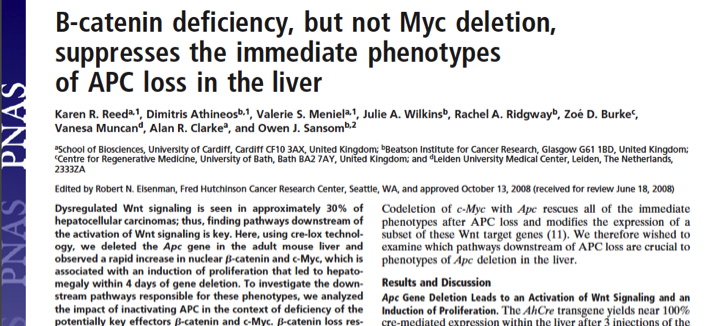
Mon., Oct. 27 - Reed et al., 2008
Teams Ecto & EndoFor all figures, include related Supporting Information figure and table portions as appropriate.
Leads to present / explain:
Papers can be found in the class resources, in the literature folder.
The presentation should be structured around the key results of the paper, as seen in the Figures. This is why group assignments are based on figures. The group starting out with Figure 1, however, must provide a reasonable background/introduction before diving into details of the figure and associated results. Similarly, the final group may want to provide some discussion and conclusions of the paper to wrap up the presentation. Remember to keep in mind the 'big picture' as well - why is this interesting and important?
Please feel free to integrate your paper presentation with lecture material, and to use illustrations from lecture (e.g., familiar Wnt or RTK signaling pathway slides may be useful).
Figures in journal articles are often small, compact and multi-part (complex). In a presentation, it is best to show only one or a few closely-related parts per slide (e.g., only Fig 1A, or Fig 1A & B), and generally to make them as large as possible on the slide. There may be few arrows or labels in the journal figure - so add your own. Then add an informative title to the figure section slide that summarizes the result / conclusion rather than an uninformative title like 'Results' or only 'Figure 1A & B.'
Understanding the methods used can be a challenge, but you should do so as best you can (see the methods guides). Your presentation, however, should NOT be focussed primarily on techniques, but rather the results and their significance. Explain the methods only as much as is necessary to make the results understandable.
Each group should plan to use a maximum of 24 min (e.g. 12 min per figure-related section). This leaves a few minutes for questions and transitions. Assuming that you divide up the presentation about equally among individuals, each person has about 3 min in each section. It is also completely acceptable to have 2 persons present Fig 1 (6 min each), and 2 persons present Fig 3, and likely more efficient.
Timing of your presentations is critical. You must practice your presentations to stay with the allotted time. If a group or individual is goes over the allotted time, I will have to cut you off to give the other group their allotted time (and this would not be good for the quality of your presentation). This means that you may not be able to cover everything in every figure in detail - better to leave out something less important to give time for a better explanation of a key result.

For all figures, include related Supporting Information figure and table portions as appropriate.
Leads to present / explain:
Methods guide - additional information to help with reading the Reed et al. paper. Note some of the same techniques are used in the Misale et al., 2012 paper.

Leads to present / explain:
Methods guide - additional information to help with reading the Misale et al. paper. Note that some techniques used are also used in the Reed et al., 2008 paper. Back to the Bio 376 Home Page